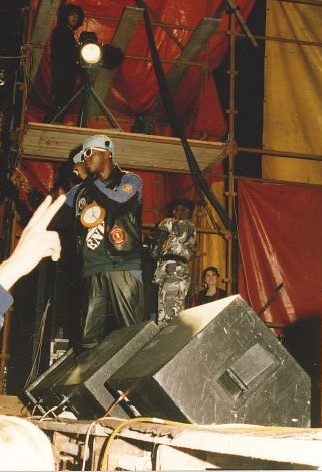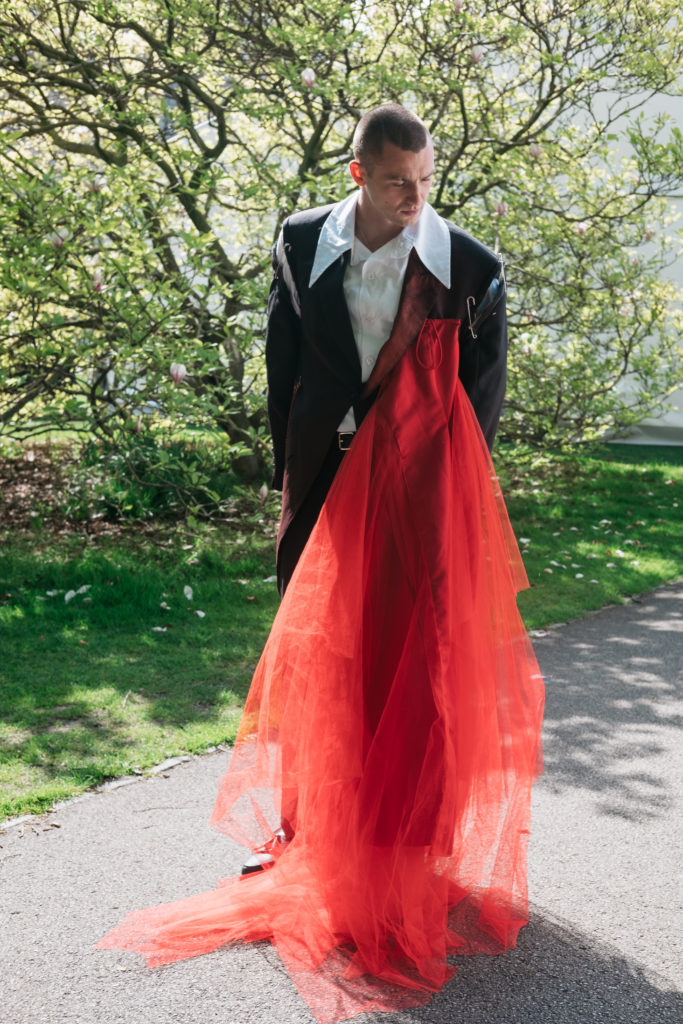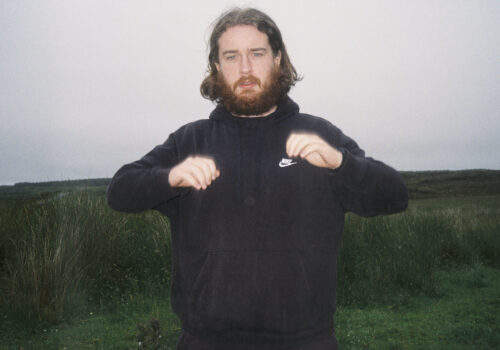Why go to Trinity Ball?
Words: Eva O’Beirne
Photography: Eva O’Beirne, Trinity Alumni, Louis O’Sullivan
District looks inside Trinity Ball 2022 to explore the event’s history, the acts playing this year and how the ball relates and reflects Dublin’s culture.
Trinity Ball has been around for over 60 years, but has it evolved with the times? With interviews with 49th & Main, Malaki and Trinity’s own Entertainment Officer, we asked the question that has been buzzing around Dublin for the past week: Why go to Trinity Ball?
Greg Arrowsmith was elected to the position of Entertainment Officer for Trinity’s Students’ Union in March 2021, in the middle of a nationwide lockdown. Trinity Ball had been cancelled for two years in a row and no one knew when it would return. Now in April 2022, Greg is about to wrap up his term as Ents Officer with the first on-campus ball in three years.
“The first thing I did after I was elected was have a bunch of friends over the next morning, and we made a sort of ‘fantasy’ line-up for the ball, our dream line-up,” says Greg. “And I’m thrilled that so many have appeared on the real thing.”
To Greg, the fact that Trinity Ball is even happening is surreal. Describing the organisation as an “emotional rollercoaster”, the Ents officer notes how three years worth of students have never experienced the event. “Managing expectations has been a tricky one but the inclusion of the Trinity Tent has created this new buzz around the ball that I haven’t seen before,” Greg explains.

He is inherently aware of how people perceive the ball, especially the black-tie element: “It’s easy to make jokes about, but at the end of the day, Trinity Ball is an event for everyone. A private party designed for students, by students? I wish there was more opportunities like this.”
This year’s ball made a splash with its Celtic Revival theme, which isn’t something that you’d automatically associate with Trinity’s image. Greg’s determination to not be tokenistic really shows, with the décor, new stage and line-up being about the appreciation of new Irish creatives instead of relying on stereotypes.
“People are bringing new elements to old traditions. When it comes to the ball that we’ve organised, we’ve tried to have at least one act for everyone to enjoy. There’s genuinely something for everyone, and I hope future line-ups stay that way,” Greg continues.
“It really is a key part of the so-called Trinity experience to go to the ball.”
“The main problems were allowing ladies into the college after nine and preventing them from going into student rooms.”
Trinity Ball Organisers, 1959
Dancers, Trinity Ball 1959

The modern-day Trinity Ball couldn’t be further from its origins. With suckling pigs and dancing the Charleston, the ball used to be a much more formal affair.
Taking inspiration from Oxford and Cambridge’s May balls, Trinity’s sports clubs used to host a large gala event in hotels in the city centre. But in 1959, the ball moved to campus and well, the rest is history.
Former President Mary Robinson once used a ladder to sneak into the ball, climbing over a wall in a ballgown.
District Magazine
In 1965, a front-page story in the Trinity News reported that “strict security precautions were to be taken at the ball” due to “at least 300 extra people” sneaking into the ball or using forged tickets the year before.
Attempts to crash Trinity Ball have become as traditional as the event itself. In recent years, students have resorted to hiding in bins, under beds and in suitcases. Even the leaders of Irish society have participated – former President Mary Robinson used a ladder to sneak into the ball with her brothers, climbing over a wall in a ballgown while Senator David Norris once pretended to be the Mongolian ambassador to be admitted.
“Henry held the ladder as I went up”, Robinson wrote in her autobiography on the incident. “Aubrey sat on the wall, coaxing me, grinning, and helping me land safely on the other side.” The Former President of Ireland recalled proudly how she did all of this “in a full-length dress.”
Flavour Flav, Trinity Ball 1988

Energetic, Rowdy, Memorable
Malaki on his Trinity Ball performance
Malaki, also known as Hugh, first heard of Trinity Ball from stories of his mother and her friends attempting to sneak in. Initially supposed to play at the 2020 Trinity Ball, Malaki is back and ready to give his fans a proper send off to the night as he closes the second stage.
“It is really funny to hear my mam telling these stories about sneaking into this prestigious event, where she felt she didn’t fit in, and now I’m playing it,” Malaki laughs. “The irony is now that it is technically an exclusive event but they’re looking to directly promote Irish acts and making sure that the ball is a way for them to break out.”
Malaki has worked with designer Stephanie Finney to create an outfit that is both a tribute to Trinity Ball’s black-tie tradition and “a respectable two fingers up to society’s expectations”. The ensemble is the perfect blend of a tux and red tulle ballgown, accessorised by safety pins and exaggerated lines. To Malaki, this outfit is an interpretation of what Trinity Ball means to him.

When asked what advice he would give budding musicians or artists who are looking to get more involved in Ireland’s creative scene, Malaki notes the “power and beauty” of being vulnerable.
“Just pursue something that you are passionate about, that’s all it is. There’s often a really strong social construct that is enforced today where you have to go to college, have to do a Master’s or succeed in certain things….sometimes you need to step away from that structure, take a risk and do something you love,” he explains.
A similar sentiment is held by his co-performer, Matthew Harris also known as Chameleon. Starting his music career in his late teens, Matthew is graduating from Trinity this year and advises any beginner artist to “let people know how much you want to pursue music and how much you care about your craft” when it comes to establishing their own careers.
He notes his delight at the new focus on Irish and Dublin-based musicians for the Trinity Ball line-up, explaining how being asked to play the event twice boosted his confidence as a musician.: “I would hope that the impact will be quite large. If I were in first year and saw that the Trinity Tent was a thing it would definitely encourage me to get more involved.”

Matthew also made a surprise appearance for 49th & Main‘s set on the Second Stage. One of the wildest crowds of the night, the crowd was electric as the Kilkenny-based duo played out their setlist.
The pair express their delight at playing the ball, with member Ben O’Sullivan noting that they’ve never been. His fellow bandmate Patrick King explains that they “don’t know what to expect”.
When asked how they perceive Trinity Ball, the duo immediately refers to the black-tie nature of the event and how it contrasts to the idea of students letting off steam. “I can’t wait to see what it will be like,” says Ben. “Hopefully we’re not too rowdy and get to play the ball a few more times. I remember seeing my friends go to the ball and thinking how weird yet fun it must be.”

The duo went to school together, briefly collaborating and making music in their teens before eventually moving abroad to Canada for a summer. Living on a street named “49th and Main”, the pair started to take music “a bit more seriously” according to Patrick. Ireland has had a lasting influence on their music – Ben notes how their boarding school friends had an eclectic taste in different genres allowing for the pair to be exposed to many styles from a young age.
The pandemic gave the pair time to perfect their craft and to expand their style as a duo, with Patrick noting that “if it weren’t for the pandemic we wouldn’t have grown as exponentially as we did, we wouldn’t have had the time to focus on our work.” Ben then interjects, explaining how they’ve rarely been in studio spaces and instead work in separate rooms when producing and writing. “It is a bit mad, but we’re so used to working a certain way. We adapted and all the hard work is paying off,” he laughs.
The pair are also getting into the swing of performing live, noting that Trinity Ball will be one of the largest crowds they’ve played to. It is evident that 49th & Main have worked hard – their set at Trinity Ball was full of energy, never lagging and captivated the entire Second Stage.

When arriving at the ball, you’re met with a kaleidoscope of different coloured lights. The campus is softly illuminated, making it feel safer than most festivals where you can be stumbling around in the dark. Thousands of students, dressed to their own versions of the nines, scream and hug each other after a long two years of sporadically seeing each other.
You may be surprised at the fact that ball gowns aren’t the norm at the ball. Long dresses sure, but veteran attendees warn against wearing heels and emphasise yes, you should bring a decent coat.
Due to the spread-out nature of the stages, there was always a space for you to take a breather and just realise the scale of the event. The campus was transformed, both recognisable and unrecognisable.
Trinity Ball doesn’t pretend to be something it’s not. It’s students having a good time, and for the first time Trinity students themselves made up a large part of the line-up, allowing for the event to have a sentimental yet celebratory feeling. Named the Trinity Tent, a new stage was set up to platform the college’s ever-growing creative community. Several artists also had their work displayed in Front Square, all reflecting the Celtic Revival theme.

Chosen to play Trinity Ball by the Ents Committee was the chairperson of DU Music Society, Gemma Cox. Describing her musical style as “dreamy-pop”, Gemma has previously curated several gigs to promote gender-minority and female talent in Dublin including the Sugar Club Sessions.
A veteran busker and performer, Gemma has “played a session in nearly every pub in Dublin” but still has some nerves for the ball itself, more so for the element of playing in front of people she knows very well. “It still hasn’t processed for me, since I’m in the middle of writing essays but I’m equal parts nervous and excited. I’m so thrilled to be asked to play.”
Having attended the ball before in first year, Gemma sees the Trinity Ball as a “great send-off” for her final year, saying that she can’t wait to see the college’s music community continue to grow: “The added support for the community, the fact that we’re not competing against each other anymore for one spot in the line-up….it’s amazing. I know people can see the ball as this weird enigma but it’s starting to reflect what students want and love.”
Also representing Trinity’s talent pool is Tertia. In her final year of college, Tertia noted that she would also be trying to finish her essays before the soundcheck on Friday but she “wouldn’t miss the ball for the world.”
“It’s an amazing feeling because there wasn’t been a Trinity Ball in two years, and there’s so much hype and anticipation about it,” she says. “I’m also looking forward to seeing so many of the acts, Malaki in particular.”
To performers like Tertia, Trinity Ball now represents an opportunity for local artists to introduce themselves to a large audience. Students and observers alike feel the need to check out each act, whether it’s in-person or on streaming platforms. Trinity Ball has turned from an insular event into a launchpad for artists to capture the attention of Dublin’s youth scene.

I had a nightmare about playing Trinity Ball. Not everyone gets opportunities like this.
Glass Gallery on Trinity Ball
Some songs will simply make a crowd go wild – and Glass Gallery certainly played this up on Friday. Belting out Arctic Monkeys and Thin Lizzy, the foursome noted their luck at being chosen to play the event to District.
Consisting of Jordan Sweetman Burke, Jack Bruton and brothers Dan and Jack Lawlor, the band was formed due to the friend group “messing around in a garage for nearly two years” before Jordan organised a gig for the group. As a band, they’ve only performed in their current form for the past two months. After a competition hosted by Trinity Ents in Whelan’s a few weeks ago, Glass Gallery was selected to play. “We were really surprised,” says Dan. “It was a real confidence boost to see that people like us as a band.”
All four agree that Trinity Ball has seemingly moved away from its previous exclusive image, pivoting towards wanting to include students more. Instead of solely the winner of Trinity’s Battle of the Bands playing the ball, several acts from the “Pre-Ball” were selected to play, including Glass Gallery, creating a sense of “anyone can go, anyone can make it” according to the band.
For students to have the ability to curate line-ups and have a say in what the promoting company does for a ball attended by over 7,000 people – it signals a turning point in the Irish music industry.
“I did have a nightmare about playing the ball last night,” says Dan. “I don’t know what that means but I am excited for it.”
“I think it’s us facing our college friend groups,” replies his brother Jack. “We want to prove ourselves and have a good time. Hopefully, that’s the case.”

Graphic designer Meghan Flood was chosen by Trinity Publications to design the Trinity Ball guide. The finished product, heavily influenced by Celtic design and Ogham, also incorporated “recent maximalism trends and clutter core, with some funky elements and old Trinity Ball pictures.”
Speaking to District, Meghan emphasises how delighted she was to design the piece noting that it was important to her that she balanced her personal expression and accessibility. “A lot of the design work is purely that, aesthetics, but there are plenty of practical elements in the piece too,” she explains.
The publication draws on the event’s history but transforms it completely to fit with current design trends. An intersection of the past and present, it illustrates how the ball has related to Dublin youth culture in many different ways.
You can read the full publication here.

Trinity Ball can seem mysterious and impermeable. Europe’s largest private party, hidden behind stone walls and attended by thousands in black tie? It seems like it shouldn’t fit into the fabric of Dublin’s culture.
But what most forget about the ball, is that it’s an outlet for these people. A release after a year of hitting the books and trying their best. A way of channelling frustrations in a city that can feel like it’s pushing you out amongst a drought of cultural spaces and rising rent costs. An opportunity for the creatives who haven’t played a festival in a long time or in some cases have never played one at all.
Can it be out of touch? Maybe. It certainly isn’t affordable to the everyday student, but according to the Ents Committee, they’re doing everything they can to keep prices down amongst rising costs for events and gigs across the country. It isn’t all glitz and glam, you still have to hide a naggin somewhere on your person and a few heaters wouldn’t go amiss amongst the April weather.
Being framed as an “experience” certainly changes your outlook on the ball. It isn’t so much about who is playing, but rather forgetting about your daily troubles and stepping into a fantasy for the night. A fantasy where you can see your classmates headline a stage before going to see your favourite DJ or band play a space that you walk through to get to class every day.
Trinity Ball is certainly evolving with the times – it’s just hard to see when you’re not there.
Elsewhere on District: Meet Dublin’s new all-female DJ collective: Puzzy Wrangler





